
What Has She Got That Hollywood Hasn’t?
y, Americans got their first look at the highest paid movie actress in the world. Her name: Sophia Loren from Naples, Italy. Adding up the names of the lady Academy Award winners in the past four years we find that one is Dutch (Audrey Hepburn), one Swedish (Ingrid Bergman) and one Italian (Anna Magnani). The fourth is Grace Kelly who in manner and speech is more British than American and as Princess Grace is now a semi-citizen of the Principality of Monaco.
Looking at the Hollywood import situation, there are no less than sixty foreign-born beauties plugging away at careers in American films—most of them very successfully and quite happily.
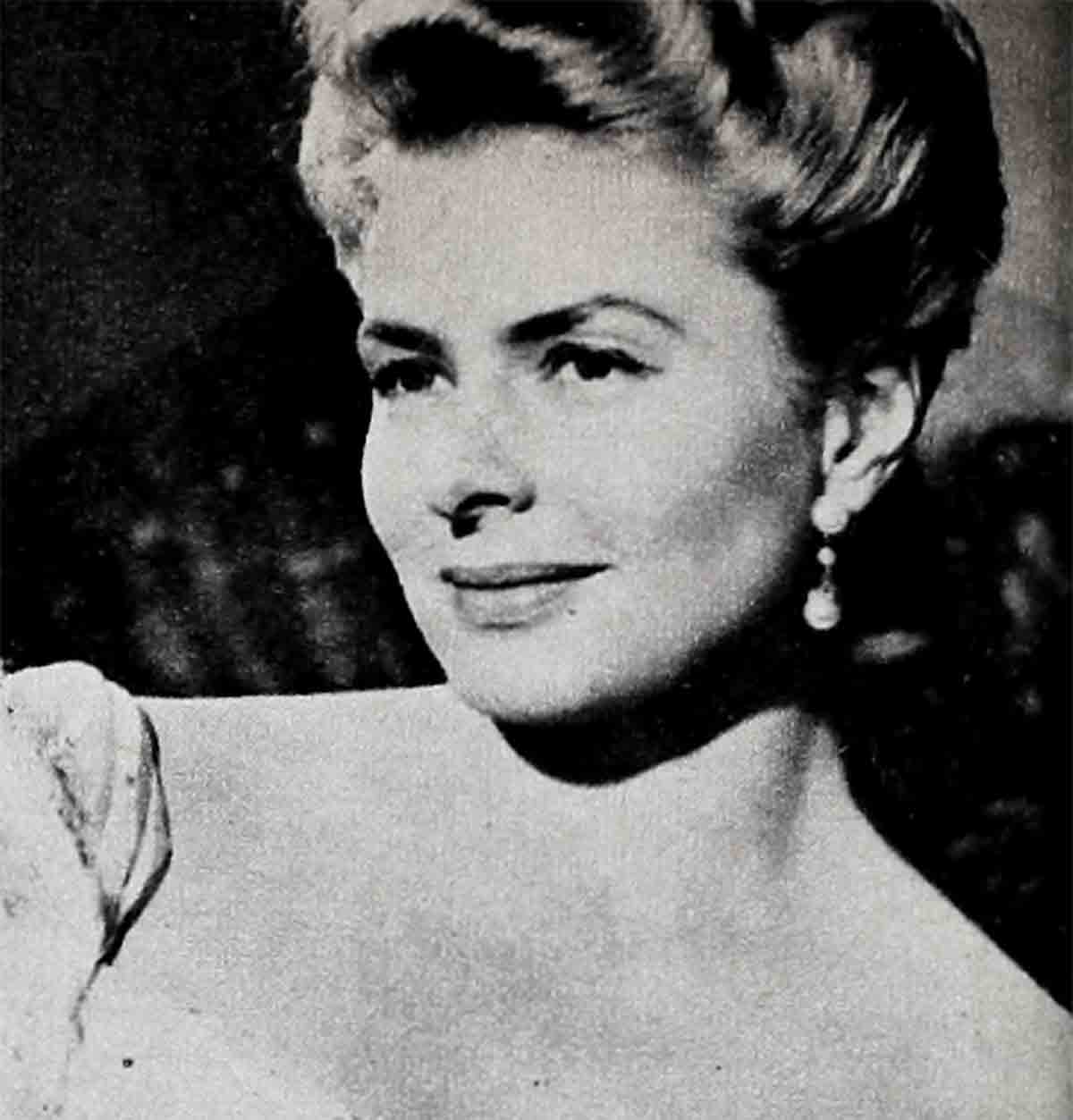
So the big question is: What’s a the matter with American girls? While there is a great shortage of female stars in Hollywood the dismal truth is that there hasn’t been a major American actress of star calibre to burst on the scene, outside of Kim Novak, since Grace Kelly. Part of the answer seems to be that all the girls who show up in Hollywood these days turn out to be a replica of the girl next door. And about as glamorous. Pigtails and jeans may turn a head or two on Main Street but they don’t cause a stampede at the boxoffice. In all fairness to our stars, it should be noted that much of the appeal of the foreigner lies in the old adage about “the grass being greener.” But the trouble is, if the tariff on foreign stars isn’t soon raised, most of the grass will have moved over here!
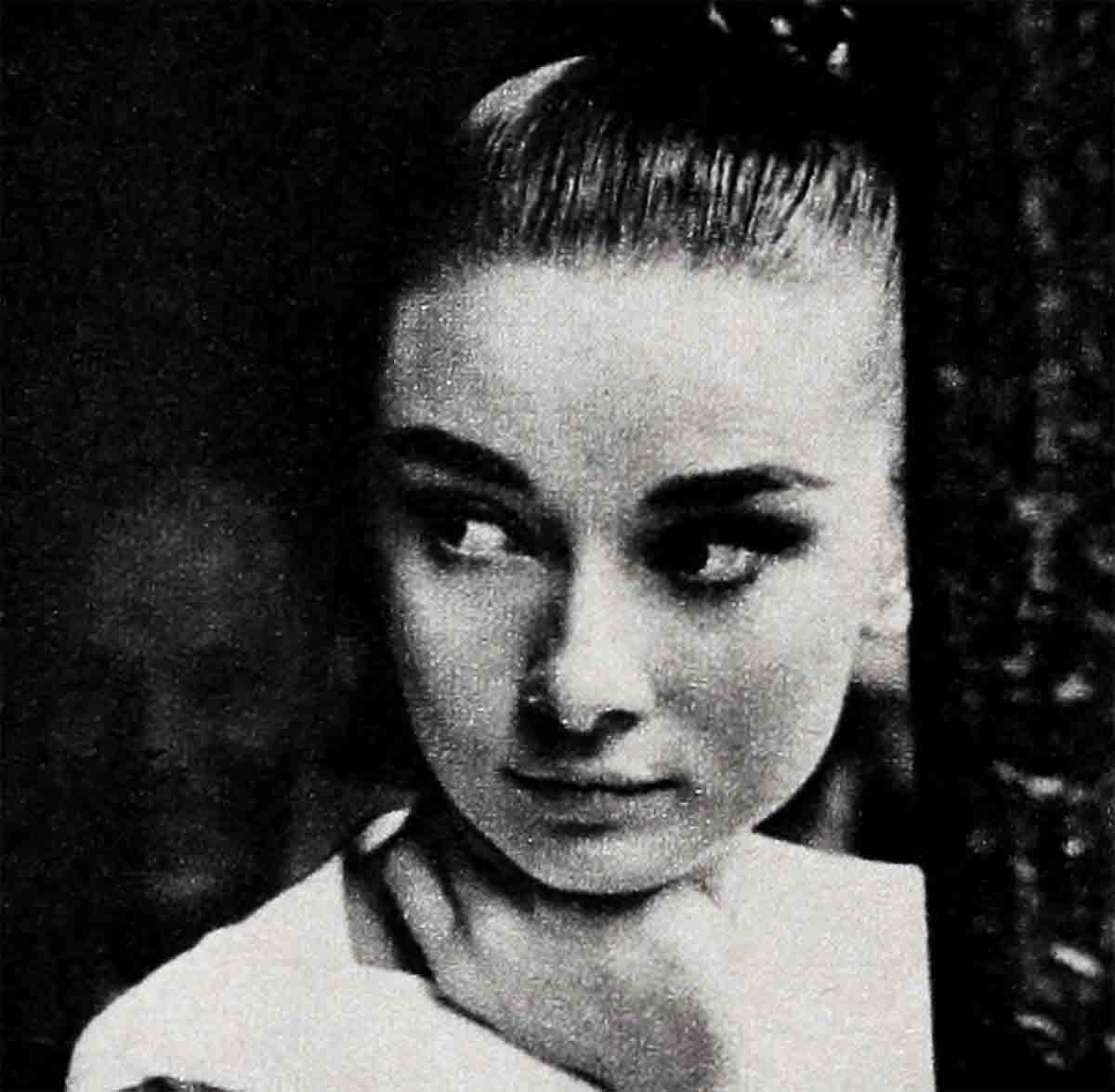
Foreign talent is certainly not new to Hollywood. As far back as 1912, the great Sarah Bernhardt, a Frenchwoman, lent her presence and prestige to an early flicker entitled “Queen Elizabeth.” Later there were Valentino, Pola Negri, Dolores Del Rio, Dietrich, Carmen Miranda, Maria Montez and others. A Gallic trio—Michéle Morgan, Danielle Darrieux and Simone Simon—made their mark here but eventually returned to la belle France. Britain’s great Vivien Leigh, hailed as the most successful actress to play both sides of the Atlantic, has won our top awards and a considerable American following, but remains rooted in her beloved England.
Formerly the situation was kept pretty well in balance. Garbo and Bergman, for example, were huge successes, but fellow Swedes Signe Hasso, Viveca Lindfors and the late Marta Toren were not. Pier Angeli (now appearing in M-G-M’s “The Vintage”) has a secure spot in the hearts of American film fans, but Valentina Cortesa and Bella Darvi returned to Europe.

Nowadays, with foreign film industries flourishing, their stars have set their sights squarely on America, and are migrating in numbers never before seen in Hollywood. At one time it was the British, then the French and, after the war, the Italian contingents that led the crowd but today new stars are arriving from all corners of the globe. From Japan Miiko Tako snares Marlon Brando in Warners’ “Sayonara.” Filmgoers learned to pronounce Shirley Yamaguchi, after seeing her luminous beauty in “Japanese War Bride” and “House of Bamboo.” From India comes lovely Anna Kashfi, who most recently appeared in U-I’s “Battle Hymn” with Rock Hudson. Finland sends us Taina Elg (“Les Girls”, M-G-M); Eva Bartok comes from Hungary (she starred with Dean Martin in M-G-M’s “Ten Thousand Bedrooms”); Irene Pappas is from Greece; Elizabeth Mueller, from Switzerland; Victoria Shaw, from Australia. To play opposite Gregory Peck in “The Purple Plain” the producers chose a willowy beauty named Win Min Than—from Burma. South of the border, Mexico has gifted us with Katy Jurado (in Allied Artists’ “Massacre at Dragoon Wells”) and Sarita Montiel. And Bing Crosby’s romantic interest in M-G-M’s “Man on Fire” is a Swedish lass named Inger Stevens.
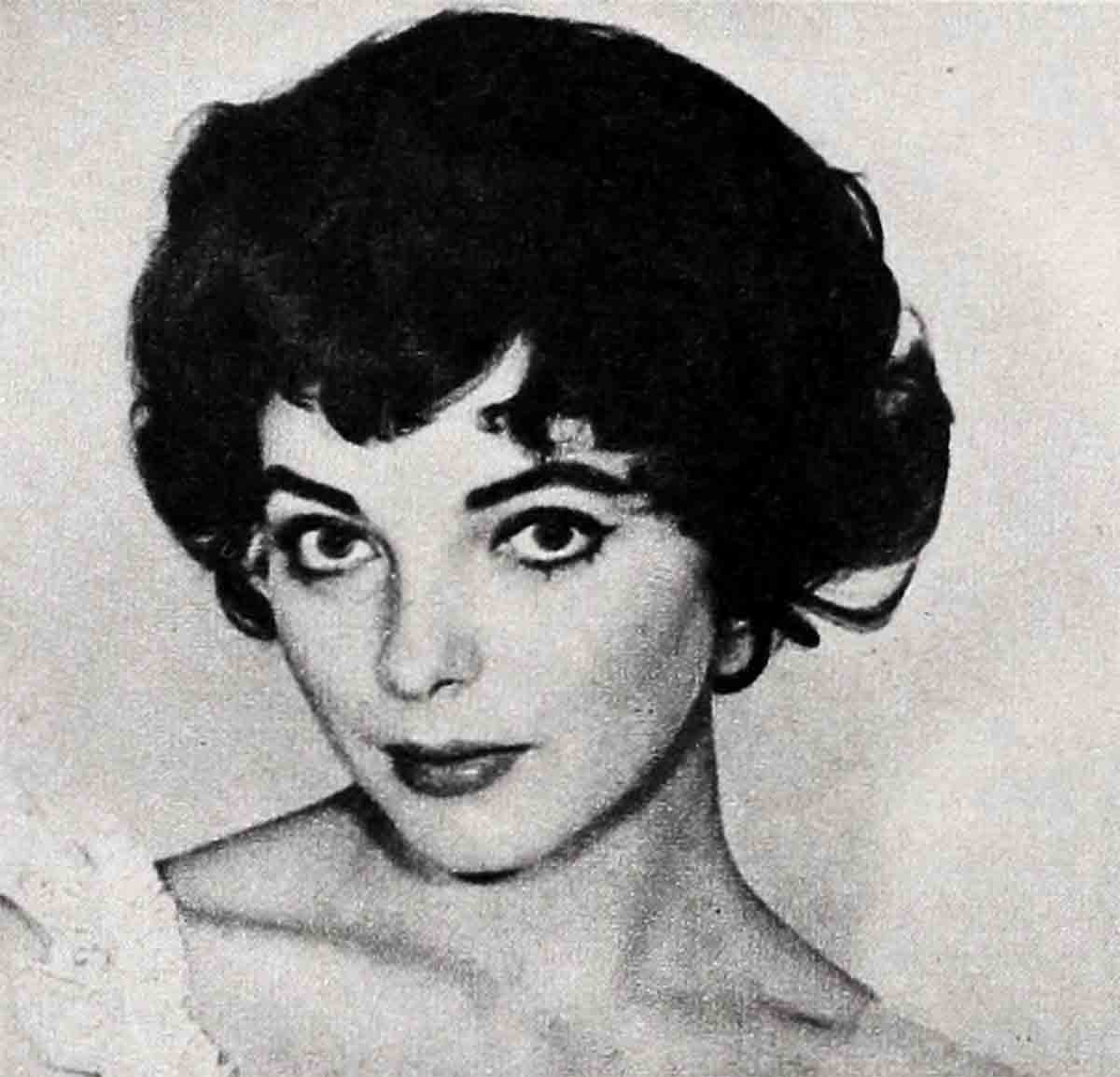
In the impact of the foreign stars on the American public, Italy continues to play the biggest role. Song-bird Anna Maria Alberghetti (“Ten Thousand Bedrooms”), Pier Angeli and sister Marisa Pavan (Universal-International’s “The Midnight Story”) are already solidly settled in American film careers. Things look promising, too for such lovelies as Rossana Podesta (“Helen of Troy”), Elsa Martinelli (“The Indian Fighter”), Milly Vitale (“The Seven Little Foys”) and Gia Scala, Bob Taylor’s co-star in M-G-M’s “Tip on a Dead Jockey”). And though Anna Magnani, Gina Lollobrigida and Sophia Loren are now world-famous, initial credit for getting the ball rolling belongs to Silvana Mangano, soon to be seen opposite Anthony Perkins in Columbia’s “This Bitter Earth.”
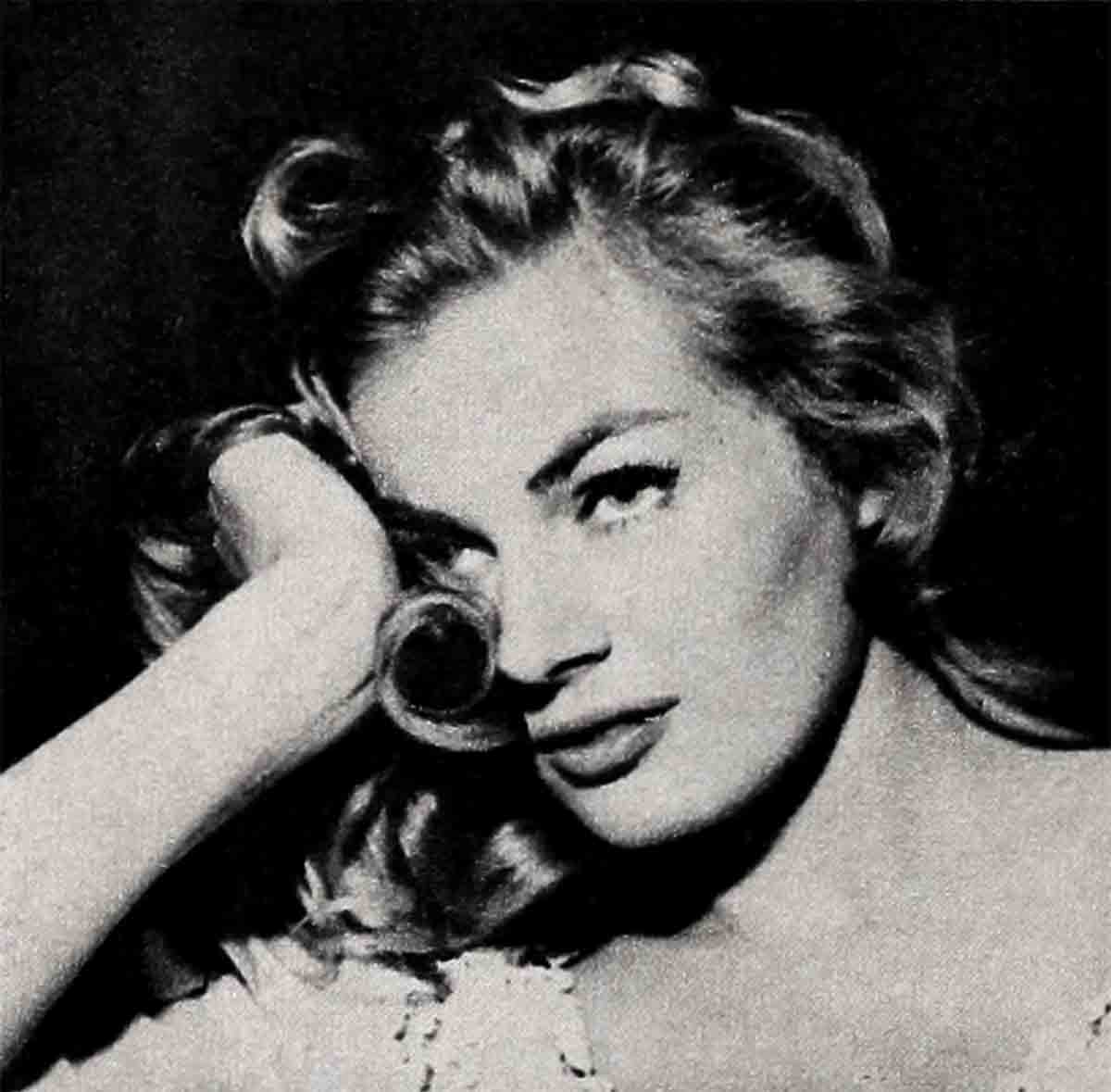
At the age of seventeen, Silvana became an international sensation, in the fullest sense of that much misused term, in 1949’s “Bitter Rice.” Clad in revealing rags (thoughtfully hiked up to the thighs), and long black nylons, she gave the term “voluptuous” its most vivid definition ever. There was also some pelvic boogie-woogie that shook the natives like nothing since Jane Russell’s famous hay-toss in “The Outlaw.” Silvana rang all the bells again, in a subsequent appearance as “Anna,” a girl torn by conflicting loves.
At about this point, the American press began to investigate the entire field of feminine anatomy, Italiano-style. Concurrently, Silvana slipped into the background, leaving center stage to associates like Gina and Sophia.
Lollobrigida and Loren are now engaged in a lively feud that is titillating the moviegoing public. Gina Lollobrigida is known, among other things, as “the most famous seven syllables since “come up and see me some time.” One of Sophia’s several titles, tendered her by bug-eyed admirers, is “the most beautiful Italian since Venus.”
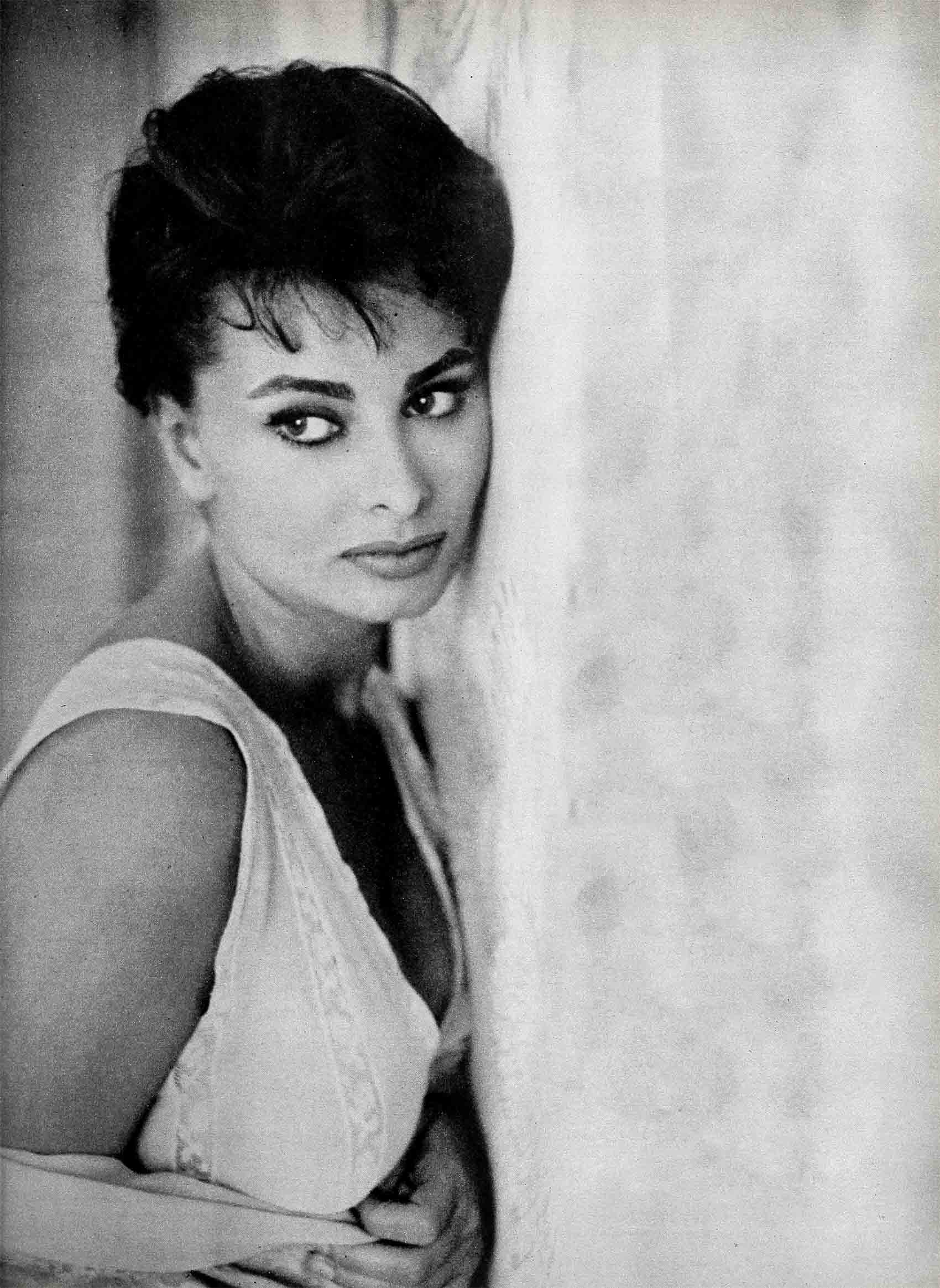
According to Sophia, battle began at the Italian Film Festival two years ago, where both stars were present. “I was a young girl, just twenty, while Gina was twenty-seven and internationally known,” comments Sophia, with a scrupulous accuracy born of the knowledge that such statistics will compare most favorably in, say, fifteen years. “You might have thought she would at least have stopped to say a few encouraging words. But no.” For “Bread, Love and Jealousy,” Gina demanded and got twice what she had been paid for “Bread, Love and Dreams.” When the third film in the series was about to get under way, Gina asked for half the profits, whereupon the producers balked and replaced her with—Sophia. “Now she is well known—not as Sophia Loren, but as a rival to me. That is bad for her,” Gina cooed sympathetically. “It puts her in the position of having to do something more than I do.” This last was delivered in a tone strongly intimating that they might just as well ask Sophia to climb the Matterhorn in track shoes. That did it. “I am sorry to hear Gina say such things about me,” crisply replied la Loren. “Her personality is a limited one. She was marvelous as a ragged peasant. But she cannot convincingly portray a lady.”
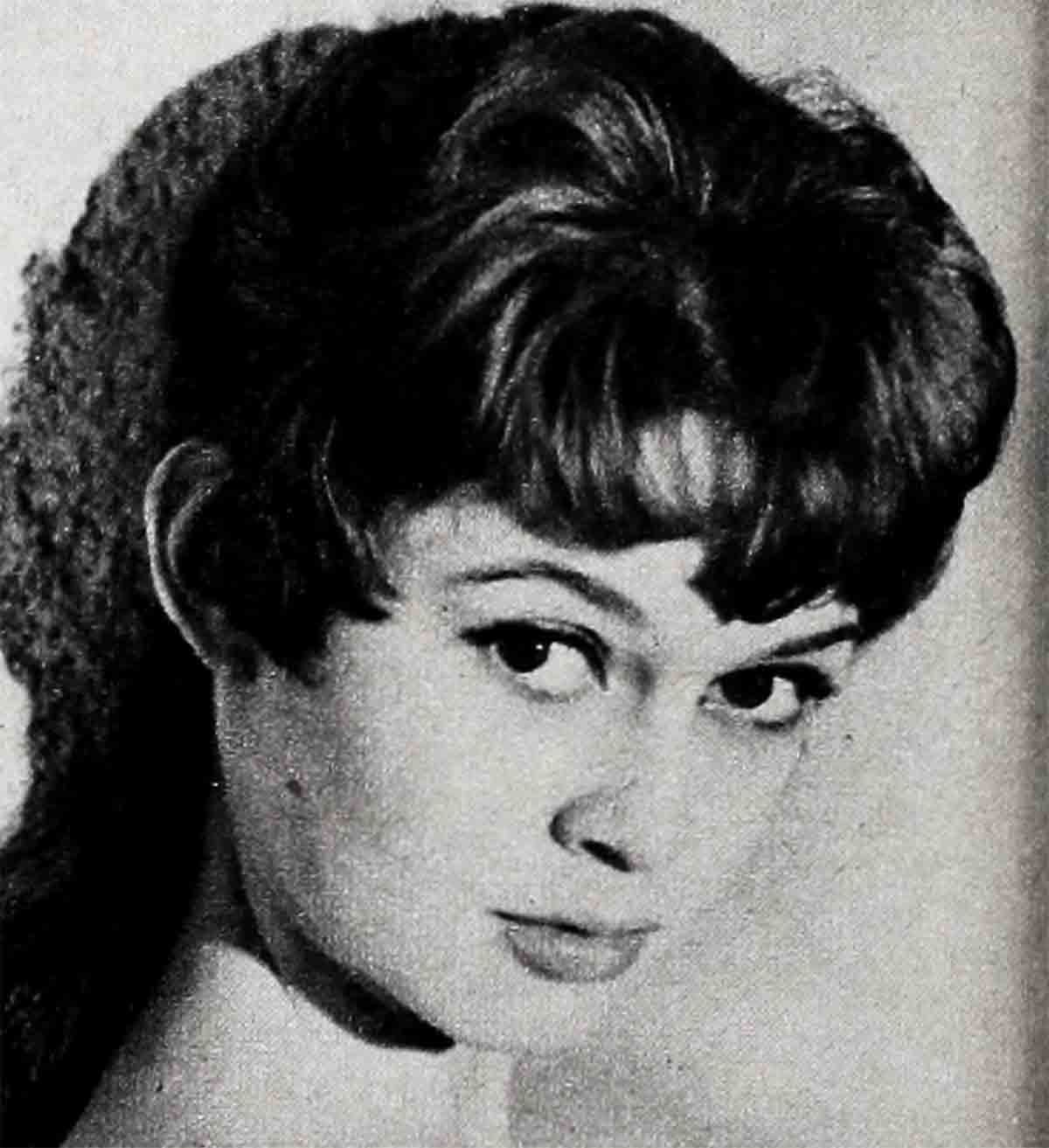
Both girls rose from poverty (Sophia from birth, Gina after the family finances were demolished by war) and both got their start in fumetti (something akin to our comic strips, except that the characters are photographed actors and actresses, and the dialogue balloons are represented as smoke rings).
As Gina tells it: “I was walking along minding my own business when this man came up to me and said that he wanted to put me in movies. I got very angry and told him that line had stopped working years ago.” But Italian film director Mario Costa was on the level, and a bit part led to a career that has spanned thirty films, international acclaim and plenty of money in the bank. One reporter recently commented: “Her fantastic rise to film success is due largely to two things: a small amount of talent and a large amount of publicity.” Rubbish! Gina’s ability as an actress has won her the Silver Ribbon (Italian equivalent of an Oscar), plus numerous other prizes and favorable critical comment.
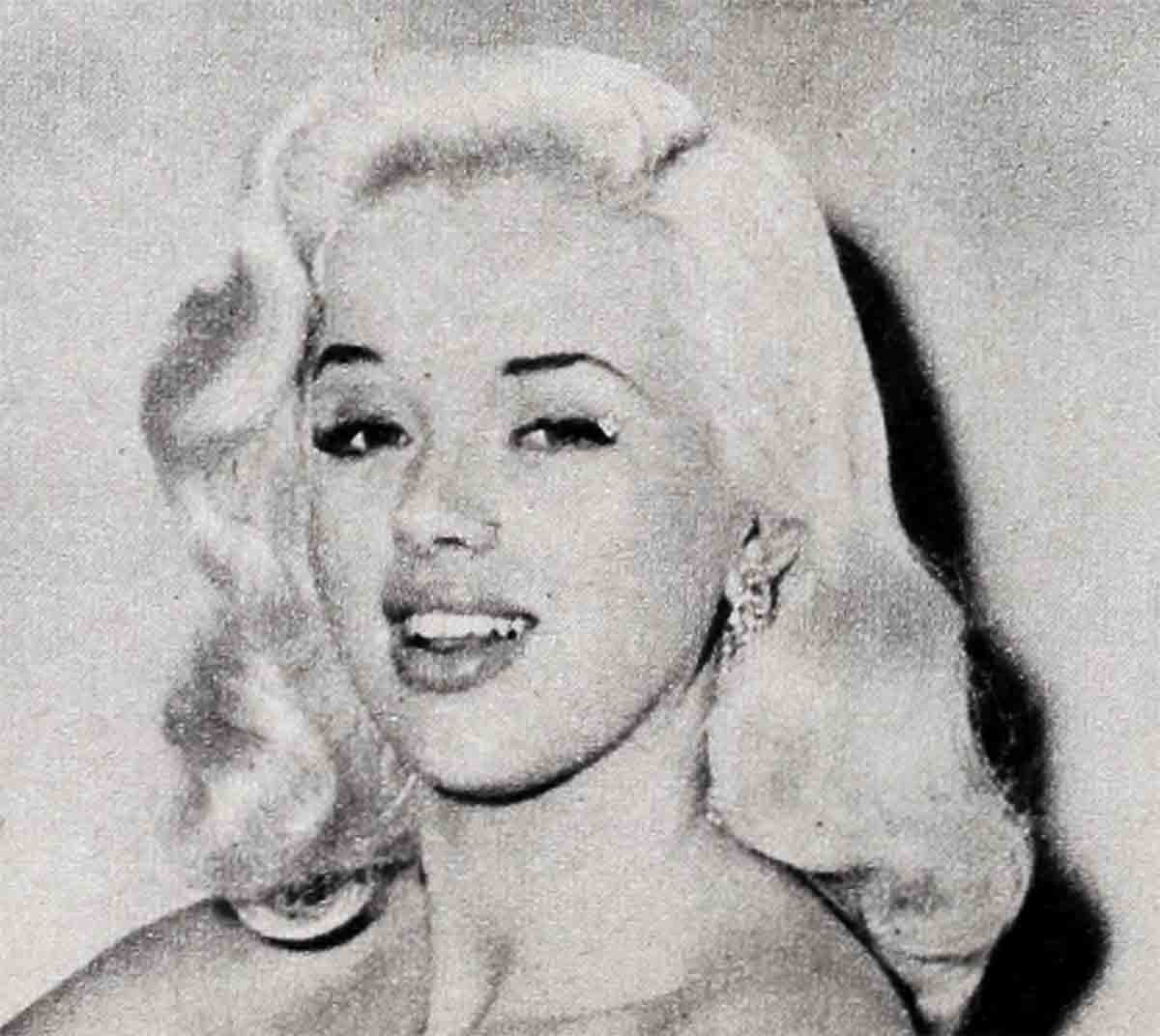
She has fought her way past phony promoters, hack producers and other situations with the assertion, repeated frequently and emphatically, that “Gina knows what is best for Gina!” This takes the form of okaying all scripts and publicity material, doing all of her own makeup and designing all of her costumes right down to lingerie and brassieres. A tireless worker who tolerates no nonsense during .working hours, she has even been known to order further shooting on scenes in which her work displeased her—though everyone else was perfectly satisfied.
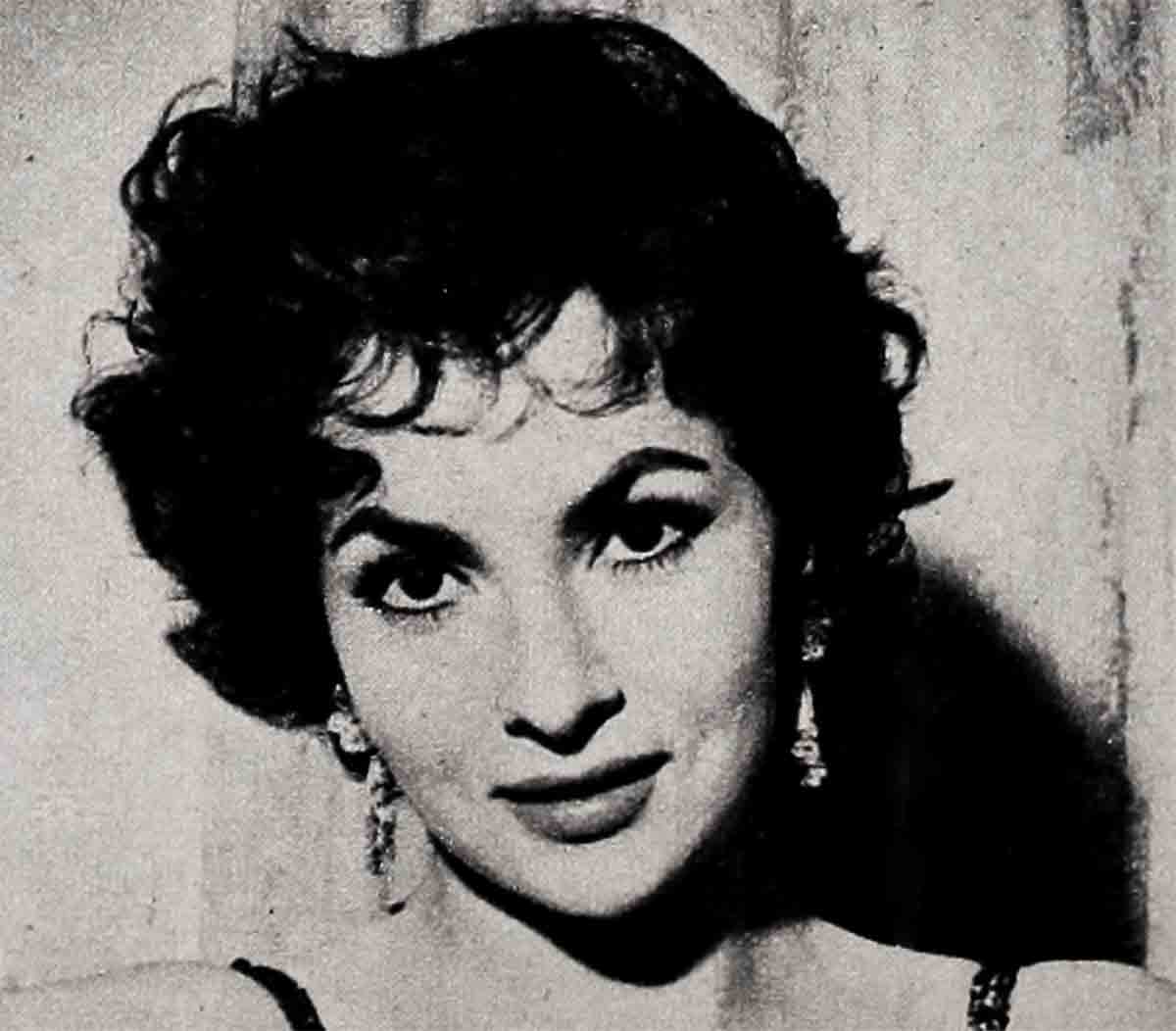
In the management of her career, Gina gets an immeasurable assist from her doctor-husband, Miklo Skofic. “My doctor, my manager, my photographer, the custodian of my happiness and well-being—I knew this the first moment I saw him,” Gina glows contentedly. “What I knew at that same moment,” retorts her handsome and witty spouse, “was that there was the woman who would make my life impossible!” At the time of their marriage in 1949, the intention was to pursue their separate careers—Gina in films, and Miklo as a surgeon. After her two unremarkable appearances in American films shot abroad, Miklo temporarily shelved his own work to take over as Gina’s business manager and has been happily at the helm ever since. And after several years of parrying inquiries about motherhood, Gina went into retirement after completing chores opposite Anthony Quinn in “Hunchback of Notre Dame” to await the birth of her first child.
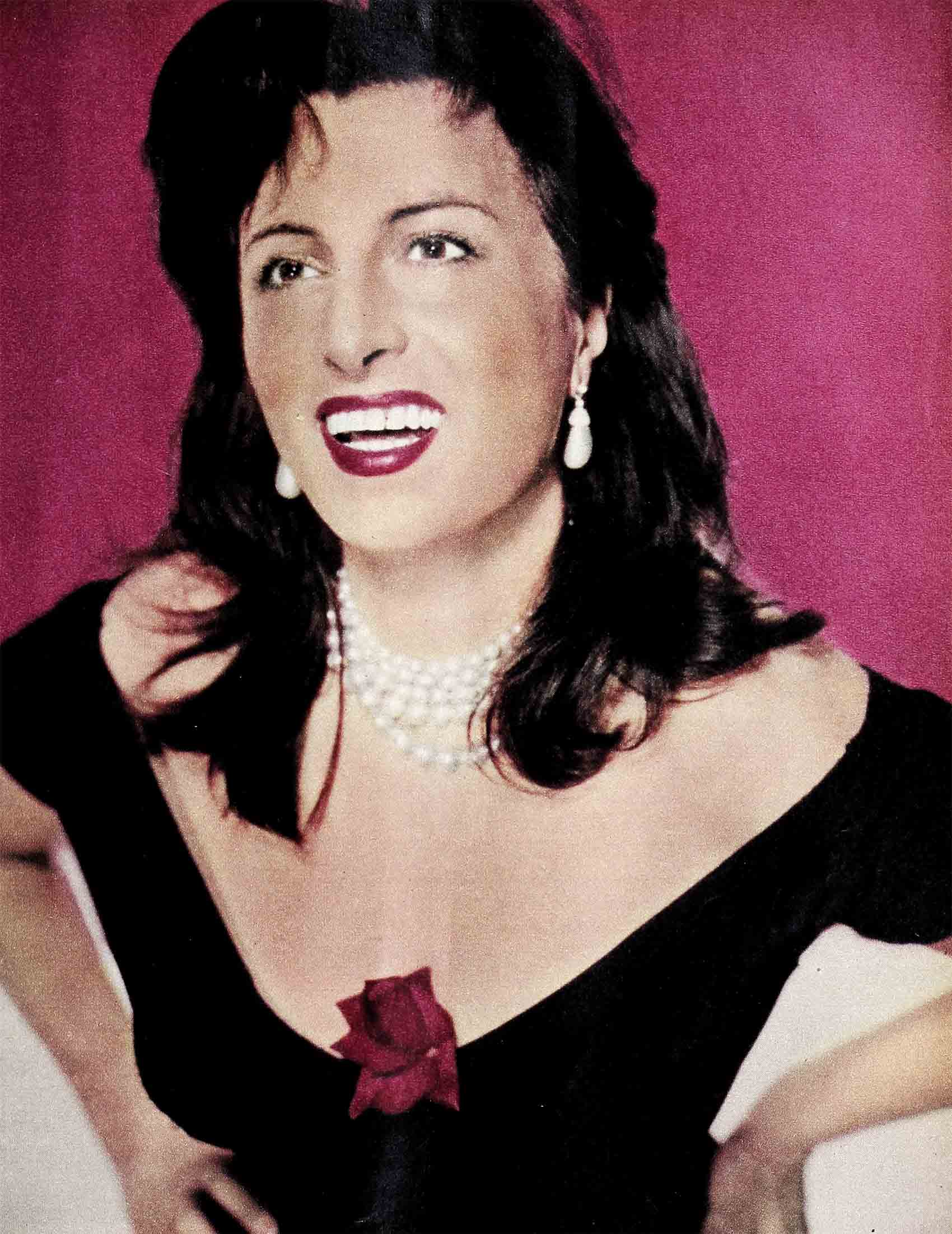
In the latest chapter of Loren vs. Lollobrigida, Sophia clearly has the upper hand. Thanks largely to an unresolved contract snarl with Howard Hughes, Gina is still not free to accept commitments in Hollywood, can only fume helplessly as Sophia is set before the American public in the most spectacular launching of a newcomer in years. After her current appearance opposite Alan Ladd and Clifton Webb in 20th Century-Fox’s “Boy on a Dolphin,” she will next be seen with Cary Grant and Frank Sinatra in Stanley Kramer’s multimillion-dollar United Artists’ “The Pride and the Passion.” This is to be followed by the release of United Artists’ “Legend of the Lost,” in which Sophia gets plenty of attention from John Wayne and Rossano Brazzi. Then she went into “Desire Under the Elms” for Paramount. For this she had Anthony Perkins and Burl Ives.
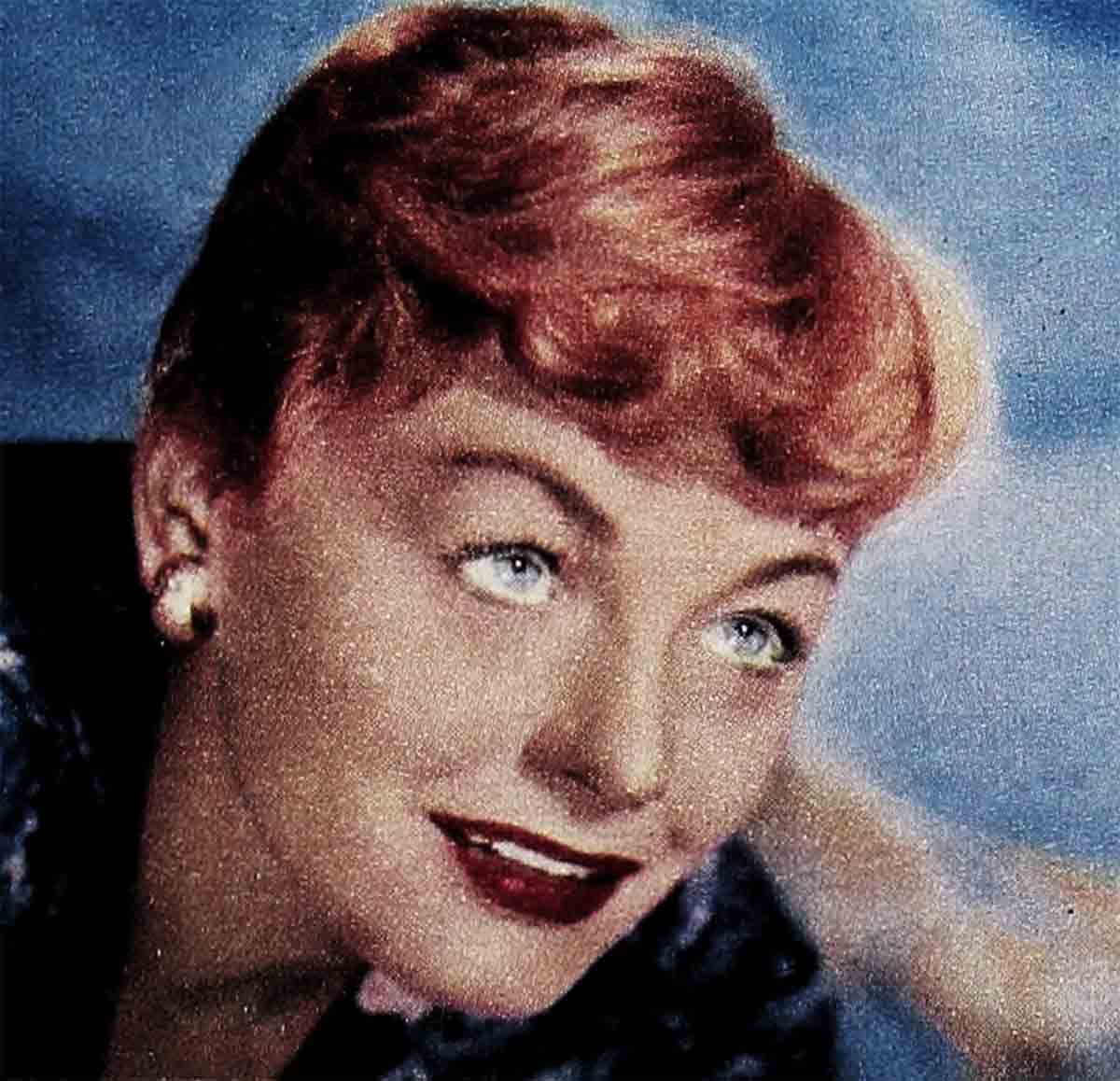
All of this is certainly a giant stride forward for one who bore the nickname of “stecchetto”—little stick. Incredible as it now sounds, Sophia was an awkward, gangling little nobody-wants-it who had pretty well resigned herself to becoming a schoolteacher—until the age of fifteen, that is. At that point, an event occurred that changed her plans. It was really very simple—a group of sailors whistled at her.
“I looked around and there was no other girl on the street. My heart went bump, bump, bump. They were whistling at me! I ran home and looked in my mirror. It was true. I was no longer ‘stecchetto’. I curved in all the standard places.” Ensuing events have been a combination of a fantastically lush physique (“Unbelievable,” commented Marlon Brando), and one of the shrewdest publicity senses this side of Jayne Mansfield.

Discovered via a beauty contest and the fumetti by producer Carlo Ponti, Sophia made her way up through a wide variety of film roles plus revealing poses in hundreds of publicity shots. To persistent hints of a romantic link with her discoverer and admirer, Sophia replies, “I have been in love only once. I still am. I won’t say any more.” Romance aside, Sophia provides plenty of other good copy.
Prompted perhaps by still-vivid memories of wartime suffering—an important factor which distinguishes most European film femmes from their American counterparts—Sophia lives on a grand scale. Extravagantly paid (“I do not work for chestnuts”), she reportedly sleeps in the largest bed in all Italy, in a luxurious Rome apartment she shares with her mother and sister. Sophia is chauffeur-driven through the streets of Rome in her Cadillac, other times she zips around the countryside in a snazzy, jet-black Italian sports car. Of Gina it has been said that she can safely handle any and all situations, but Sophia arouses the protective instinct in everyone. For that reason, she has been a big favorite with the casts and crews of her pictures.
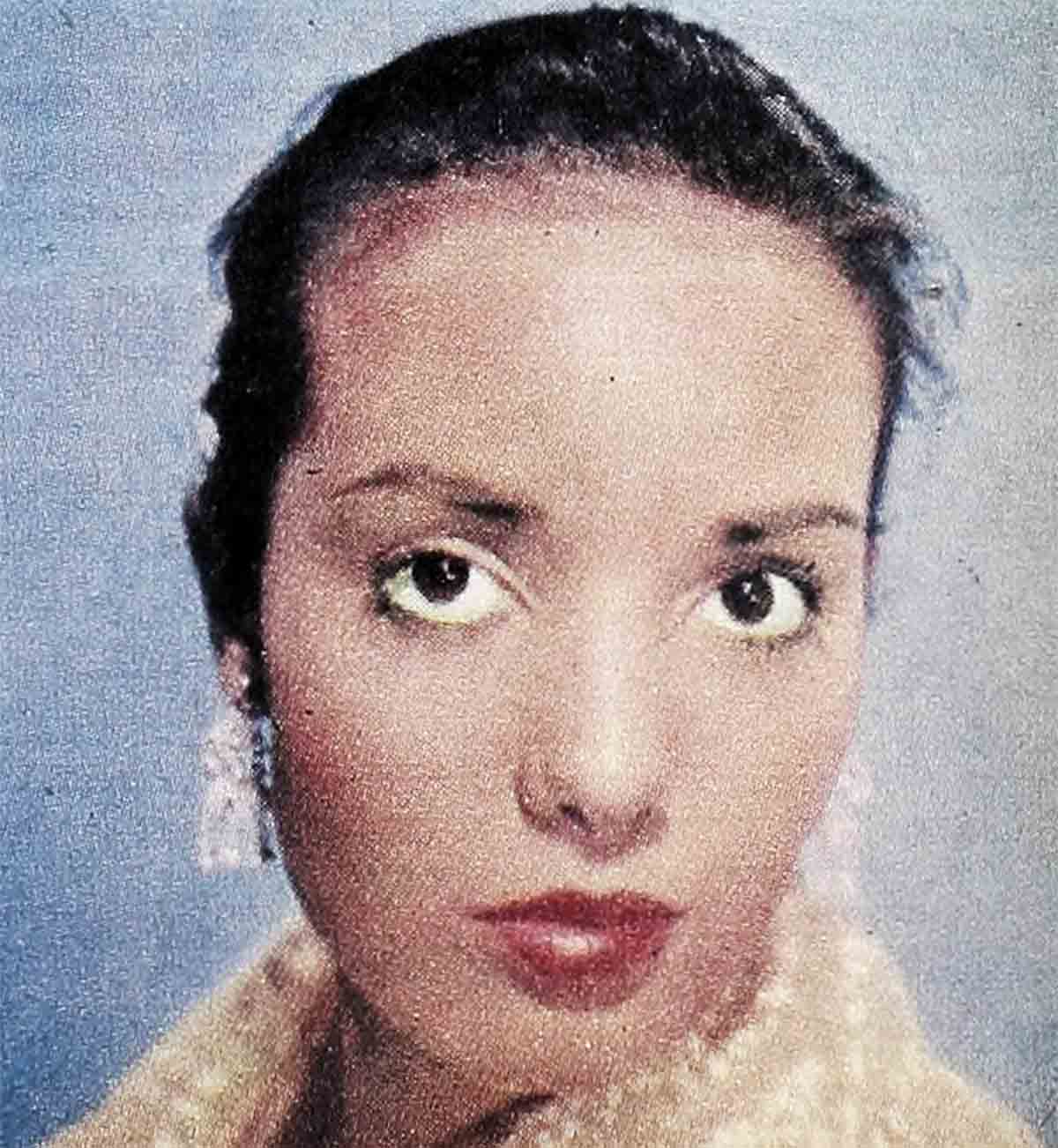
Knowing of her intense desire to perfect her English, her co-workers on “Pride and the Passion” spent their spare time teaching her bits and phrases of the language. Asked to pinch hit for a vacationing Broadway columnist, Sophia (who will be twenty-three in September) came up with some advice on life and love in England that would never be found in the pronouncements of advice to the lovelorn column. Sample: “Brutes with big muscles can only make you unhappy because you know you are wiser than they, and still you must do as they wish. This causes wrinkles.” And: “The intellectual man has interests which involve him safely, leaving you plenty of time for dressing and doing your hair. Since these things are woman’s enduring solace, it is clear that love for a clever man will last longer.”
This same session produced the now-famous remark, “Everything I’ve got I got from eating spaghetti. You try it.” After being queried about this any number of times, Sophia finally laid it to rest upon her arrival in Los Angeles. “Of course I like spaghetti,” she sighed wearily, “but I don’t eat it every day!”
Breathtaking beauty and snappy publicity aside, there is mounting evidence in each new Loren picture of Sophia the actress—which is her eventual goal. Cary Grant has said, “I believe Sophia will be one of our biggest stars.” Recently there were rumors about putting Sophia and Gina in the same picture, and a plan was put forth to Italy’s great Vittorio De Sica, who has played a large part in the careers of both girls. Shaking his head in mock horror, De Sica muttered, “I am not a brave man,” and disposed of that idea—for the present anyway.
Surveying all of this more or less complacently from the top of the heap is Anna Magnani, secure in her position as one of the world’s great actresses. In a letter to this writer, Bette Davis once commented, “Miss Magnani is a truly great artist, and it is time that America recognized her as such.” What fellow professionals like Bette had been saying about her for years was finally put on brilliant display in “The Rose Tattoo” and crowned with an Oscar. Now it is common knowledge that, for emotional range and dramatic fire, La Magnani has few peers.
This great talent was born out of wedlock some forty-odd years ago (the date varies) in the slums of Rome. Her father departed from the scene before she was a month old, and when Anna was three, her mother decided on a sojourn in Egypt that lasted for twelve years. Anna was then brought up by her grandparents, and entered a drama school at seventeen. After graduation, there were years of acting in the traditional manner in both theatre and films—which got her nowhere.
Then she had a chance to watch the comics work in the variety revues staged during the cheerless days right after the war and, posers that the bawdier and earthier the material the better from an audience viewpoint, made up her mind then and there.
“The classic poses, the cultured accents—tripe!” hooted Anna. “For me, acting should be as natural as life.” Drawing upon the resources of her slum background, she went on to become the world’s foremost exponent of naturalistic acting. And the range of emotion she shows in her films (everything from exquisite tenderness to volcanic violence) is equally reflected in her private life.
She was married in 1935 to film director Goffredo Allessandrini, and separated from him in 1942. The union produced a son, Luca, now fifteen. It is when her son is mentioned in conversation that the normally animated Magnani features fall into tragic repose—eyes glisten and the voice becomes hoarse with emotion. Stricken with polio at the age of eighteen months, Luca has spent most of his life in a Swiss sanitarium. “Everything I have done has been for Luca,” Anna has often said. Otherwise, the marriage is chiefly noted for a statement then made by her husband—the kind of remark that has a way of coming back with a bang. Said he: “Give up the theatre, Anna. You’ll never make a go of it.” Allessandrini is further reputed to have told his wife, “The cinema can never be for you.”
Next came Rossellini. Professionally (“Open City,” “The Miracle”) they were perfectly mated, but mutual jealousy and suspicion turned all of Italy into one, grand battlefield, and they hurled crockery at each other in all of the best restaurants from Naples to Florence. When Rossellini became enamored of Ingrid Bergman, Anna vowed to “break every plate of spaghetti in Rome over his head.” Recently both the Rossellinis and La Magnani were registered at the same hotel in Paris, and the entire city held its breath. Nothing happened. “So long ago,” Anna shrugs when queried about the whole affair.
Several of these facts naturally were well-known in Hollywood before Anna arrived to do “The Rose Tattoo.” Producer Hal Wallis rested no easier at reports that “she works only when she’s in the mood.” But he found this to be untrue. “She was on the set every morning at 8:30. Late hours meant nothing to her,” Wallis later reported. “She is a very simple, sensitive woman. And very warm—when she knows you.” Other people had other memories. Tenants of her Hollywood hotel were solemnly informed, via conspicuous signs posted here and there, that “If you use your bathroom in the morning, you will be disturbing the world’s greatest actress.” (This was later revealed as her personal maid’s handiwork.) From the film’s famous slugfest—which made what went on in “Shane” look like grammar school volleyball—Virginia Grey emerged with three cracked ribs plus numerous cuts and bruises. As for Marisa Pavan—after a slapping scene she wound up with a swollen jaw. “If it hadn’t been rough,” the petite Virginia later remarked, “the scene would have failed.” And Marisa enthused: “If I could make another picture with her, I would let her slap me not only in the scenes but before and after besides.”
Of her magnificence in “Rose Tattoo,” one critic stated: “It will be a wonder if Hollywood finds another good part for her, and a great pity if it does not.” Currently La Magnani and producer Wallis (in whom Anna has complete faith) are working on her second Paramount film, entitled “Obsession.” Whether it will be a wonder or a great pity (or, more likely, something in-between) can be judged by moviegoers when it is released sometime within the next few months.
England has sent over a trio of beauties who can hold their own against any foreign competition. There is Dana Wynter, in looks and manner something of a latter-day Merle Oberon—the average American’s idea of what the typical English girl is like. Then there is sultry Joan Collins, a lushly unconventional hoyden who might be the average American’s idea of what the typical English girl is not like. And lastly there is Diana Dors, who is rather in a class by herself.
Miss Dors is quite something unusual to have emerged from the land of Yorkshire pudding, and her countrymen follow her every swivel-Hipped movement with all the ecstatic pride of the goose who has finally succeeded in laying the golden egg. Her advent on the international scene, as a matter of fact, excited the same kind of reaction that might occur, say, if someone as dignified and dependable as Lassie suddenly produced a Siamese cat.
Diana’s recent Hollywood visit was somewhat unfortunate. While there, she made two films—“I Married a Woman” with George Gobel and “The Unholy Wife” with Rod Steiger, neither yet released.
Then there was the swimming-pool incident. Right in the middle of a swank, open-air welcoming shindig for her London hairdresser, Diana, her husband and two others were unceremoniously pushed into the drink, fully-clothed. A sputtering Diana emerged from the pool with her blouse and slacks revealingly plastered to her well-publicized form. While husband Dennis Hamilton was busy beating the supposed culprit to a pulp, Diana administered a helpful kick here and there, and rent the gentle atmosphere with a few scorching oaths not ordinarily heard in polite Mayfair circles (well, not publicly anyway). Then, on top of miscellaneous hassles with her agent came the breakup of he marriage—a partnership that in six years made Diana Dors Ltd. one of the biggest businesses in Britain. Diana returned to England sadder, wiser and fifteen pounds lighter (from nerve strain). With those physical assets, however, plus talent in other departments, Diana will undoubtedly be heard from again.
Sweden’s answer to all of this is, of course, luscious Anita Ekberg. After being proclaimed “Miss Sweden of 1952,” Anita made small progress for two years or so until she really hit her stride subbing for Marilyn Monroe on a Bob Hope junket to Greenland. After that the newspapers just couldn’t print enough of her. Which was very fortunate since her film appearances seemed to be working in the opposite direction.
“In ‘Blood Alley,’ they strapped down my bosom, dyed my hair, put me in an ill-fitting coolie coat and made me wade in the mud,” recalls Anita. “I couldn’t even find myself in the picture.” This explains the circumstances under which a studio workman bumped into her, muttered “pardon me, mac,” took a mystified second look, corrected himself to “pardon me, lady,” and walked off shaking his head. And there were decorative bits in a few more films, but the news items were far more interesting.
Like the account of a gay New Year’s party a couple of years ago. Anita had poured herself into a black velvet creation, and made a dazzling entrance with every stitch straining for all it was worth. There then occurred a most electrifying display of seam-splitting. “Under the gown was just—Anita!” gasped one popeyed witness. Gathering up the remnants, Anita fled for cover, later to comment, “I like tight dresses but after this . . .”
Eventually she got her first starring role—as a harem torso-tosser in “Zarak”—and landed right in the middle of Britain’s House of Lords. “A poster is now being plastered all over London,” announced sixty-year-old Lord Lucas. “It shows the reclining figure, so scantily clad as to be vulgar, of Anita Ekberg, an actress.” Obviously warming to the subject, seven Lords wanted to know “Who is Miss Ekberg?” Another member of the House, better briefed in the matter, volunteered that everyone has a different idea of good taste—“One man’s meat is another man’s Ekberg.” The subject was speedily changed after that, and anyway, a studio spokesman had the last word. “What nature has given Miss Ekberg,” he sagely exclaimed, “we cannot take away.”
At about the time of her marriage to strapping British actor Anthony Steel, Anita decided to call it a day on this kind of publicity. Articulate and intelligent—called charming and sedate by those who know her well—Anita has perhaps been most vocal in her demands to be given a chance at dramatics. “Of course, I am very flattered that men admire me. If they didn’t something would be wrong. But now I want to be an actress.”
Cornell Borchers is Germany’s finest entry in the international sweepstakes since Hildegarde Neff rode to glory a few years back. Which detracts not a whit from pert little Marianne Cook, a fellow Rhinelander also under contract to UniversalInternational. (Marianne is co-starring with Rossano Brazzi and June Allyson in “Interlude” and Cornell Borchers has been teamed with George Nader in “Flood Tide.”) Cornell has the blonde, blue-eyed Nordic appeal of Ingrid Bergman (to whom she is most often compared). She also reveals an innate dignity and personal warmth that have won many fans.
The actresses previously mentioned represent only a fraction of foreign-born talent now working in American films. Deborah Kerr, Pier Angeli, Jean Simmons, Leslie Caron, Audrey Hepburn, Zsa Zsa Gabor and Corinne Calvet—many of whom are now American citizens—are examples of ranking foreign-born favorites. British film queens Glynis Johns, Wendy Hiller, Kay Kendall, Joan Greenwood and Claire Bloom have either been in recent or upcoming releases. So too for French sirens Michele Morgan, Martine Carol, Brigitte Bardot, Jeanmaire, Nicole Maurey, Etchika Choureau (who taught Tab Hunter to appreciate French taste) and Barbara Laage.
What makes foreign stars seem more alluring than American girls?
Part of the answer lies in that little word S-E-X.
In Europe, sex is a part of life; in America it appears to be fast becoming one. Which perhaps explains why foreign filmmakers look on in helpless befuddlement when some of their products, having traveled freely all over the continent, run into all sorts of censor complications over here. For example, the sight of Sophia Loren flipping pizzas in “Gold of Naples” clad in a simple peasant blouse with a tendency to keep slipping off one shoulder revealing nice Sophia, was regarded with goodnatured amusement and admiration by her compatriots. Over here, patrons seeing the film gasped aloud. Another case involves the luscious French actress Martine Carol, who in a scene with Van Johnson in M-G-M’s “Action of the Tiger,” is seen diving from the deck of a sailboat in a bathing suit. Foreign audiences will see the same shot—without a suit. The reason? The situation didn’t demand one.
The American preoccupation with certain anatomical elements as old as Eve completely defies analysis. In a couple of well-publicized cases, it borders on the absurd. But whatever it is it’s been a boon to the respective careers of Sophia Loren, Gina Lollobrigida, Diana Dors, and Anita Ekberg. These girls’ straightforward approach to the facts of life and casual exhibition of natural assets has been box office dynamite in a country where public mention of sex is still pretty much confined to those wicked washroom walls.
The foreign stars’ appeal also lies in the allure of the mysterious and the unusual. And a decided plus is their general tendency—thanks to continental sex attitudes—to work for a more balanced combination of sex appeal and acting ability. In America, a beautiful girl who can act is something of a wonder. In Europe, with rare exceptions, it’s par for the course.
What of the new crop of foreign stars? Variety commenting on their invasion of the U.S. says, “Yanks love ’em, if they know ’em.” They are certainly getting to know them better than they ever did in the past. Perhaps the foreign stars will inspire the American lassies to touch up their glamour and do away with the jeans and leather jackets. To which many of the fans—male at least—say, “Hooray!” And I’m willing to bet American girls aren’t going to take the current foreign-star invasion sitting down—not for long anyway. But until they do, foreign glamour girls never had it so good.
THE END
—BY DICK SHEPPARD
It is a quote. PHOTOPLAY MAGAZINE AUGUST 1957



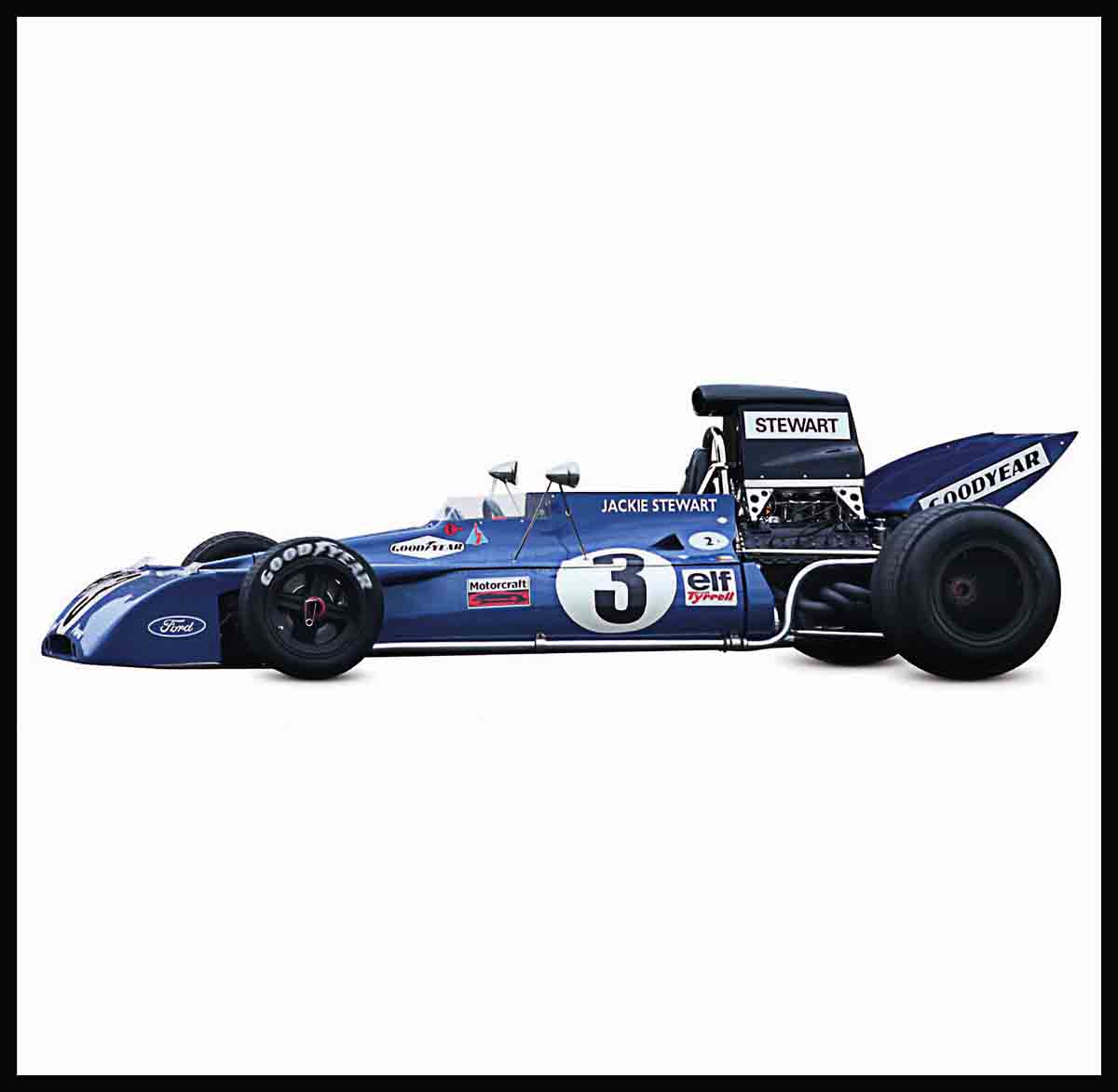

No Comments